So, I was running a localhost SQL Server and I tried to edit the first 200 rows of a table. Then I have received this (the original is in German, I found this one through the net):
After this, SSMS closes. I researched and I found out that this is a known issue, if the PATH variable is more than 2K signs. Mine is 1336, so the problem should be somewhere else.
This is the path variable:
C:\Program Files\Common Files\Microsoft Shared\Windows Live;
C:\Program Files (x86)\Common Files\Microsoft Shared\Windows Live;
C:\ProgramData\Oracle\Java\javapath;
C:\Program Files (x86)\Intel\iCLS Client\;
C:\Program Files\Intel\iCLS Client\;
%SystemRoot%\system32;
%SystemRoot%;
%SystemRoot%\System32\Wbem;
%SYSTEMROOT%\System32\WindowsPowerShell\v1.0\;
C:\Program Files\Intel\WiFi\bin\;
C:\Program Files\Common Files\Intel\WirelessCommon\;
C:\Program Files\Intel\Intel(R) Management Engine Components\DAL;
C:\Program Files (x86)\Intel\Intel(R) Management Engine Components\DAL;
C:\Program Files\Intel\Intel(R) Management Engine Components\IPT;
C:\Program Files (x86)\Intel\Intel(R) Management Engine Components\IPT;%systemroot%\System32\WindowsPowerShell\v1.0\;
C:\Program Files\Microsoft SQL Server\Client SDK\ODBC\110\Tools\Binn\;
C:\Program Files (x86)\Microsoft SQL Server\120\Tools\Binn\ManagementStudio\;
C:\Program Files (x86)\Microsoft SQL Server\120\Tools\Binn\;
C:\Program Files\Microsoft SQL Server\120\Tools\Binn\;
C:\Program Files (x86)\Microsoft SQL Server\120\DTS\Binn\;
C:\Program Files\Microsoft SQL Server\120\DTS\Binn\;
C:\Program Files (x86)\Windows Live\Shared;
C:\Program Files\Git\cmd;%USERPROFILE%\.dnx\bin;
C:\Program Files\Microsoft DNX\Dnvm\;
C:\Program Files\Microsoft SQL Server\130\Tools\Binn\;
C:\Program Files\TortoiseSVN\bin
Sometimes, depending on my luck I even do not get an error message but this:

It means that the SSMS is going to be restarted.
Additional points:
- SQL Server 2014
- The issue exists just on localhost. If I connect to a server, it is ok.
- I have enough RAM.
- Localhost was working for about a day, but somehow decided to make this.
What I have tried:
- Restart the pc :)
- Drop and rebuild DB
- Count the signs in the PATH variable
- Installing the latest version from here -> https://msdn.microsoft.com/en-us/library/mt238290.aspx
Further info and updates:
The DB was created by me using SSMS 2014. It had nothing to do with previous versions.
Error details on the error message (In German, but the language is not that important):
Important EDIT - this seems to be important! This is the info from the studio:
Microsoft SQL Server Management Studio 12.0.2000.8
Microsoft Analysis Services-Clienttools 12.0.2000.8
Microsoft Data Access Components (MDAC) 10.0.10586.0
Microsoft MSXML 3.0 6.0
Microsoft .NET Framework 4.0.30319.42000
Betriebssystem 6.3.10586
Concerning the server:
the one in the cloud without problems is 12.0.4213
the localhost one where the problems appear is 13.0.1100
I think this should be something.


